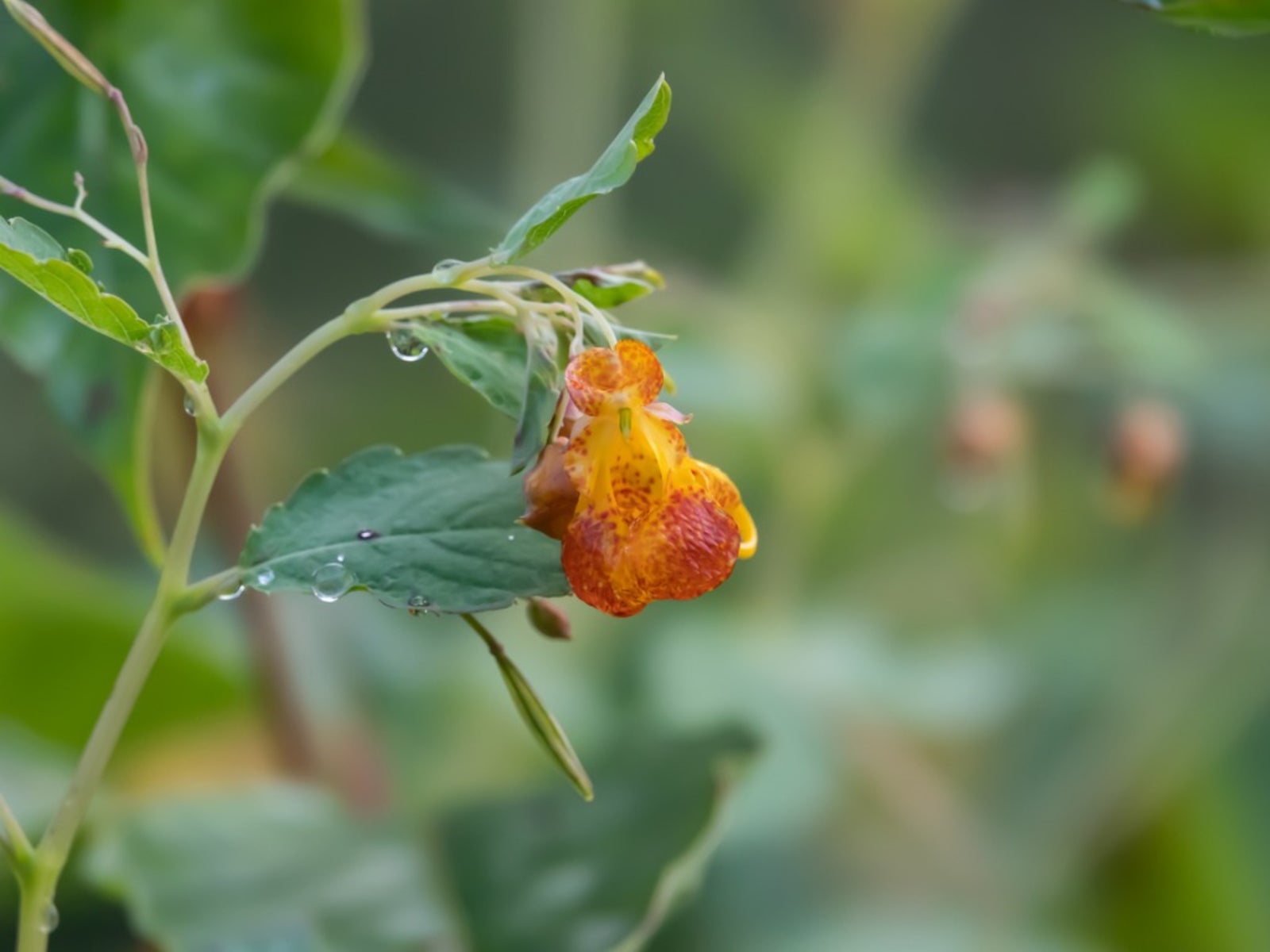Jewelweed Growing: How To Plant Jewelweed In The Garden


Jewelweed (Impatiens capensis), also called spotted touch-me-not, is a plant that flourishes in conditions that few others will tolerate, including deep shade and soggy soil. Although it is an annual, once established in an area, it comes back year after year because the plants self-sow vigorously. Having foliage that glistens and sparkles when wet gives this Native American wildflower the name jewelweed. Keep reading to learn more about growing wild jewelweed impatiens.
What is Jewelweed?
Jewelweed is a wildflower in the Impatiens family that is commonly grown as a bedding annual. In the wild, you can find dense colonies of jewelweed growing in drainage areas, on stream banks, and in bogs. Wild jewelweed impatiens plants assist wildlife like butterflies, bees, and several types of birds including many songbirds and hummingbirds. Jewelweed plants grow 3 to 5 feet (1-1.5 m.) tall and bloom from late spring to early fall. The orange or yellow flowers dotted with reddish brown spots are followed by explosive seed capsules. The capsules burst open at the slightest touch to fling seeds in every direction. This method of distributing seeds gives rise to the common name touch-me-not.
How to Plant Jewelweed
Choose a location in full or partial shade with rich, organic soil that stays wet or most. Jewelweed tolerates more sun in locations where summers are cool. If the soil lacks organic matter, dig in a thick layer of compost or rotted manure before planting. Jewelweed seeds germinate best when stored in the refrigerator for at least two months before planting outdoors. Scatter the seeds over the surface of the soil when all danger of frost has passed. They need light to germinate, so don't bury the seeds or cover them with soil. When the seedlings emerge, thin them to 6 to 8 inches (15-20 cm.) apart by clipping out excess seedlings with a pair of scissors.
Jewelweed Plant Care
Jewelweed plant care is easy. In fact, it requires little care in areas where the soil stays wet. Otherwise, water often enough to keep the soil moist and apply a thick mulch. The plants don't need fertilizer in rich soil, but you can add a shovelful of compost in summer if they aren't growing well. Once established, the dense growth of plants discourages weeds. Until then, pull the weeds as necessary.
Sign up for the Gardening Know How newsletter today and receive a free copy of our e-book "How to Grow Delicious Tomatoes".

Jackie Carroll has written over 500 articles for Gardening Know How on a wide range of topics.